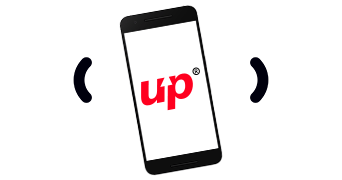
How many presentations have you sat through thinking it lacks that spark, and you’re counting down the minutes until you can leave? Unfortunately, this experience is all too common, which is why it’s essential for presenters to craft presentations that pique interest to keep the audience engaged from start to finish. This is a complex task, as audiences are tough to crack. If you don’t have the in-house expertise to create a compelling presentation that evokes the emotional response you want from your audience, consider hiring a presentation company to craft one for you. The experts will know how to utilise emotive language to make an impact on your audience. Let’s explore the role that emotive language plays in creating impactful presentations.
Employing Emotive Language in Presentations
In a presentation setting, emotive language is the deliberate use of words and expressions to stir emotional responses from your audience. It is a powerful way to capture attention, spark interest and increase the likelihood that your audience will remember your presentation long after leaving the room.
Integrating emotive language into your presentation will allow you to forge a bond with your audience, inviting them into the narrative you’re constructing. Doing this makes you appear more credible and trustworthy, which helps keep audience members engaged with your message. Your audience feels heard and understood as you empathise with them, address their pain points and show that you’re an authority on your topic. They are far more likely to listen to your entire presentation if they feel heard and understood.
But that’s not all—emotive language can set you apart from your competitors. By incorporating a personal, authentic touch into your presentation, you can give yourself a unique voice that stands out from the brand voice of your competitors.
Use Emotive Language Carefully
We’ve established that emotive language is a potent tool, allowing you to connect with your audience on a deeper level. However, excessive or misplaced emotional language can come off as insincere or dishonest, which will massively reduce the impact of the message you’re trying to convey to your audience. It’s about striking the right balance by using enough emotive language to create a connection but not too much to become over the top.
Including emotive language in your presentation has the power to enhance how effective it is, increasing the likelihood that business presentations, investment pitches or any other presentations you may give are successful.
How to Use Emotive Language in Presentations
Including emotive language in your presentation could mean the difference between an engaged audience and a disinterested one. But using it effectively requires careful planning and consideration. Here are some strategies to help you harness emotive language in your next presentation:
Identify emotional triggers
First, identify the emotions you want your audience to feel. Do you want them to be happy, hopeful, relieved or maybe even a bit worried? Carefully select words and phrases that will evoke these emotions in your audience. Once you’ve identified the emotions you want to tap into, you can build the rest of your presentation around them.
Evoke vivid imagery
To make the audience feel how you want them to, try to paint vivid pictures with words. Using emotive language to evoke vivid imagery will keep audiences engaged and increase the likelihood that your words will stick in their minds long after you’ve finished speaking. It’s an excellent opportunity to include metaphors to create connection and comparison and add depth to your narrative.
Draw on personal experiences
A great way to engage audiences and leverage the emotions they’re feeling is to incorporate personal stories into your presentation. They create an emotional connection with the audience, helping them to view you, the speaker, as a human being with thoughts, feelings and aspirations. As a result, they can relate to you on a deeper, more personal level. Additionally, real-life examples help bring your message to life, making it more tangible, relatable and memorable.
Pay attention to your tone and pace
It’s not only the words that matter, it’s also how you say them. For instance, altering the speed and rhythm of your speech can emphasise your main points or even introduce drama or suspense, leaving the audience wanting more. Rapid speech typically conveys urgency or excitement, while slower speech strikes a more serious tone and allows you to draw more attention to the statement you’re making.
Focus on storytelling
Humans love hearing stories—it’s an innate part of who we are. We are compelled by well-structured narratives that take us on a journey, from setting the scene and encountering a problem to overcoming hardship. To make your story as impactful as possible, integrate personal anecdotes or relevant case studies that bring your points to life. Your story should weave the whole presentation together, creating a narrative that is easy to follow and captures your audience’s attention for the duration.
Be authentic
Emotive language should be used to display genuine emotion—audiences can sense when you’re not being authentic, and this will significantly reduce the impact of your message. Authenticity matters because it engages people and breeds trust, meaning that the audience is more likely to be swayed by your message. One of the best ways to relate to others in any situation is to be authentic, but this is a particularly important piece of advice when it comes to giving presentations.
Final Thoughts
Emotive language, when used appropriately and authentically, will transform your next presentation. It’ll be transformed from a collection of facts and figures into a compelling narrative that taps into our innate human desire to be entertained through storytelling. You can tap into the emotions of your audience to create a deeper bond that not only helps engagement but also increases audience understanding and retention of your main messages. So, whether you’re giving a presentation at work or you’re pitching to potential investors, remember to use emotive language to create a lasting impact, helping your audience understand your message and relate to you on a more personal level.











